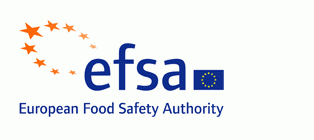EFSA sets recommended EU protein intakes at 0.8g/kg per day

A PRI indicates the amount of an individual nutrient that the majority of people in a population need for good health depending on their age and sex.
“The population reference intake for adults of all ages was estimated to be 0.83g protein/kg body weight per day and is applicable both to high quality protein and to protein in mixed diets,” said the Parma-based assessor.
In delivering an opinion on EU protein intakes, EFSA’s Panel on Dietetic Products, Nutrition and Allergies (NDA) also acknowledged that intakes twice the 0.83 level were, “regularly consumed from mixed diets by some physically active and healthy adults in Europe”.
The NDA said such levels “are considered safe”.
“Data from food consumption surveys show that actual mean protein intakes of adults in Europe are at, or more often above, the PRI of 0.83g/kg body weight per day,” the NDA wrote.
DRVs denied
But less positively for industry, the panel said dietary reference values (DRVs) could not be established for several health conditions due to insufficient data.
“The available data on the effects of an additional dietary protein intake beyond the PRI on muscle mass and function, on body weight control and obesity (risk) in children and adults, and on insulin sensitivity and glucose homeostasis do not provide evidence that can be considered as a criterion for determining DRVs for protein,” it said.
“Likewise, the available evidence does not permit the conclusion that an additional protein intake might affect bone mineral density and could be used as a criterion for the setting of DRVs for protein.”
In this way it added that DRVs could not be set for amino acids because they “are not provided as individual nutrients but in the form of protein.”
“In addition, the Panel notes that more data are needed to obtain sufficiently precise values for indispensable amino acid requirement.”
Demographic breakdown
The panel recommended PRIs for population groups such as pregnant women who should consume 1, 9 and 28g of protein per day in the first, second and third trimesters of pregnancy respectively.
Lactating women should consume 19g/d for the first six months and 13g/d afterwards.
Children should also increase intake above the PRI depending on their age.
Data from dietary surveys show that the average protein intakes in European countries vary between 67-114g/d in adult men and 59-102g/d in women – between 12-20% of total energy intake for both sexes.
The NDA said accurate European protein intake data per/kg was scarce but varied between 0.8 to 1.25g/kg for adults.
EFSA has raised a number of positive points about protein, not least the possibility that the PRV should be increased for pregnant and lactating women, claims Suzane Leser, nutrition manager, Volac Lifestyle Ingredients.
She told NutraIngredients.com that Volac also welcomes the spotlight shone on the Nitrogen Conversion Factor (NCF) – an ongoing debate for the dairy industry and food labelling.
Labelling misalignment?
Leser said that on reading the Opinion we see a potential misalignment between EFSA recommendations and the new Food Information Regulation (FIR).
"The EFSA opinion states that when the aim is to indicate a product’s potential to supply amino acids, the use of the NCF specific to the food is more relevant. For dairy products this is x 6.38 as established in Directive 92/46/EEC for the sale of milk and milk products.
However, to aid the simplicity of the labelling process the new Food Information Regulation states that a standard conversion rate should be used for all protein sources: x 6.25.
This means that protein levels based on N x 6.25 typically underestimate the true protein contribution from high quality protein sources and, most critically, significantly overestimate the contribution from protein sources of low quality."
She argues it is not just a consumer labelling issue but potentially one of resource efficiency. "In line with the above Directive, dairy products are commonly traded with protein NCF x 6.38. Assuming all customers declare protein in compliance with labelling regulations as N x 6.25, there must be unnecessary over-supply. This is uneconomical because protein is the most costly of the food elements to consumers, and from a sustainability perspective hardly in line with the European Sustainable Consumption and Production Policies."
The EFSA opinion can be found here.

















